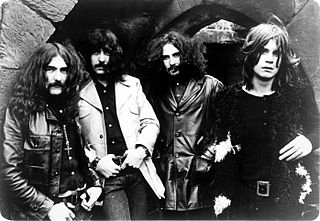
Black Sabbath were an English rock band formed in Birmingham in 1968 by guitarist Tony Iommi, drummer Bill Ward, bassist Geezer Butler and vocalist Ozzy Osbourne. They are often cited as pioneers of heavy metal music. The band helped define the genre with their first three albums Black Sabbath, Paranoid and Master of Reality (1971). Following Osbourne's departure in 1979, the band underwent multiple line-up changes, with Iommi being the only constant member throughout their history.

Paranoid is the second studio album by English heavy metal band Black Sabbath, released on 18 September 1970 by Vertigo Records in the United Kingdom and on 7 January 1971 by Warner Bros. Records in the United States. The album contains several of the band's signature songs, including "Iron Man", "War Pigs" and the title track, which was the band's only Top 20 hit, reaching number 4 on the UK charts.

Never Say Die! is the eighth studio album by English rock band Black Sabbath, released on 29 September 1978. It was the last studio album with the band's original lineup and the last studio album to feature original vocalist Ozzy Osbourne until the 2013 album 13. It was certified Gold in the U.S. on 7 November 1997 and as of November 2011 has sold 133,000 copies in the United States since the SoundScan era. The album received mixed reviews, with critics calling it "unbalanced" and insisting its energy was scattered in too many directions.
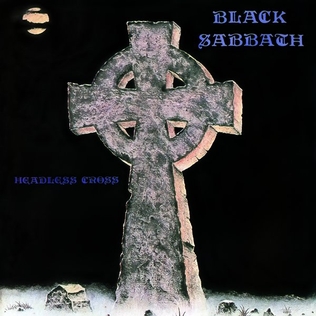
Headless Cross is the fourteenth studio album by English heavy metal band Black Sabbath. Released in April 1989, it was the group's second album to feature singer Tony Martin, the first to feature drummer Cozy Powell, and the only album with session bassist Laurence Cottle.

Master of Reality is the third studio album by English heavy metal band Black Sabbath, released in the United Kingdom on 6 August 1971 by Vertigo Records. It is regarded by some critics as the foundation of doom metal, stoner rock, and sludge metal. Produced by Rodger Bain, who also produced the band's prior two albums, Master of Reality was recorded at Island Studios in London from February to April 1971. Guitarist Tony Iommi and bassist Geezer Butler downtuned their instruments during the production, achieving what Iommi called a "bigger, heavier sound".
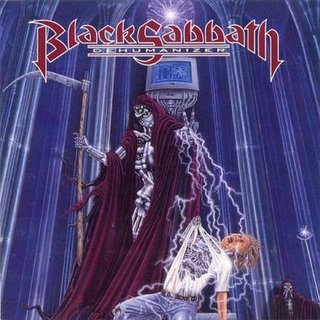
Dehumanizer is the sixteenth studio album by English rock band Black Sabbath. It was first released on 22 June 1992 in the UK by I.R.S. Records and on 30 June 1992 in the US by Reprise Records.

Sabotage is the sixth studio album by English heavy metal band Black Sabbath, released on 28 July 1975. The album was recorded in the midst of a legal battle with the band's former manager, Patrick Meehan. The stress that resulted from the band's ongoing legal woes infiltrated the recording process, inspiring the album's title. It was co-produced by guitarist Tony Iommi and Mike Butcher.

We Sold Our Soul for Rock 'n' Roll is a compilation album by British heavy metal band Black Sabbath, originally released in January 1976 in the UK and 3 February 1976 in the US.
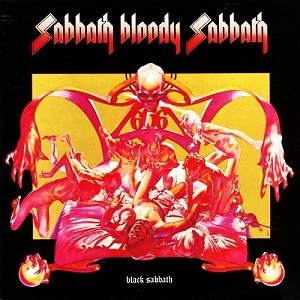
Sabbath Bloody Sabbath is the fifth studio album by English heavy metal band Black Sabbath, released in November 1973. It was produced by the band and recorded at Morgan Studios in London in September 1973. The writing process for the album, which began in Los Angeles, California, was initially hampered in part by the band's substance abuse and fatigue following their 1972–1973 world tour in support of their previous album, Vol. 4. The band then relocated to Clearwell Castle in the Forest of Dean, Gloucestershire, England, where guitarist Tony Iommi conceived the main riff of what became the album's title track and lead single.

Mob Rules is the tenth studio album by English heavy metal band Black Sabbath, released in November 1981. It followed 1980's Heaven and Hell, and was the second album to feature lead singer Ronnie James Dio and the first with drummer Vinny Appice. Neither musician would appear on a Black Sabbath studio album again until the 1992 album Dehumanizer.
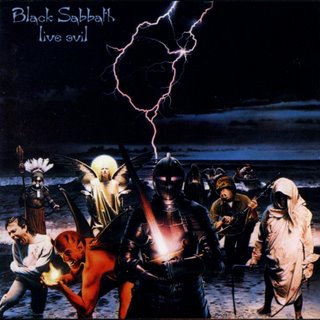
Live Evil is the first official live album by English heavy metal band Black Sabbath. The previously released Live at Last (1980) was not sanctioned by the band. Live Evil peaked at number 37 on the Billboard Pop Albums chart.

Heaven and Hell is the ninth studio album by English heavy metal band Black Sabbath, released on 18 April 1980. It is the first Black Sabbath album to feature vocalist Ronnie James Dio, who replaced original vocalist Ozzy Osbourne in 1979.

Technical Ecstasy is the seventh studio album by English heavy metal band Black Sabbath, produced by guitarist Tony Iommi and released in October 1976 by Vertigo Records. The album received mixed reviews from critics but was a commercial success, peaking at number 13 on the UK Albums Chart and number 51 on the US Billboard 200 Album chart, later being certified Gold by the RIAA in 1997.

Reunion is a live album by English heavy metal band Black Sabbath, released on 19 October 1998. As implied by the title, the album features a reunion of the original Black Sabbath lineup of vocalist Ozzy Osbourne, guitarist Tony Iommi, bassist Geezer Butler and drummer Bill Ward. The album represents the first new release featuring that version of the group since 1978's Never Say Die! and Osbourne's subsequent firing the following year. Black Sabbath received their first ever Grammy Award in 2000 for the live recording of "Iron Man" taken from Reunion.

Black Box: The Complete Original Black Sabbath 1970–1978 is a collection of the first eight albums by the heavy metal band and a DVD of 4 videos. The set contains the albums recorded with original singer Ozzy Osbourne, who was fired in 1979 after completion of the band's Never Say Die! tour. This marked the end of the group's original line-up that featured Osbourne, guitarist Tony Iommi, bassist Geezer Butler and drummer Bill Ward. All eight albums are digitally remastered and repackaged in mock vinyl LP packaging, including an 80-page booklet with liner notes written by Henry Rollins, Chris Welch, and Brian Ives. The discs included in the set are as follows:

The Collection is a compilation album released by English heavy metal band Black Sabbath in 1992. The album was released on the label Castle, who released two CD versions of this album in the UK, both with the same cover art and songs. The album includes greatest songs of Black Sabbath with Ozzy Osbourne prior to his dismissal in 1979, from the eponymous album to Never Say Die!. The album has 15 tracks, two from Black Sabbath, two from Paranoid, one from Master of Reality, two from Black Sabbath Vol. 4, two from Sabbath Bloody Sabbath, two from Sabotage, two from Technical Ecstasy and two from Never Say Die!.

Greatest Hits is a compilation album from Black Sabbath, released by Universal in 2009.

Iron Man: The Best of Black Sabbath is a compilation album from Black Sabbath, released by Sanctuary Records to support the band's 2012 reunion tour.
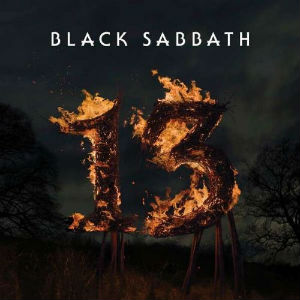
13 is the nineteenth and final studio album by English heavy metal band Black Sabbath. It was released on 10 June 2013 through Vertigo Records, acting as their first studio album in 18 years following Forbidden (1995). It was the band's first studio recording with original singer Ozzy Osbourne and bassist Geezer Butler since the live album Reunion (1998), which contained two new studio tracks. It was also the first studio album with Osbourne since Never Say Die! (1978), and with Butler since Cross Purposes (1994).
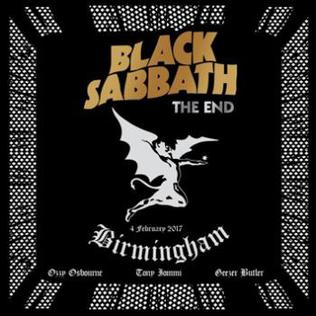
The End: Live in Birmingham is a live album by English heavy metal band Black Sabbath. It features the final performance from their farewell concert tour, known as The End Tour, recorded at Genting Arena in Birmingham, England, on 4 February 2017. Performing at the show and on the album are founding Black Sabbath members Ozzy Osbourne, Tony Iommi, and Geezer Butler. They performed with session drummer Tommy Clufetos filling in for the band's original drummer, Bill Ward, as well as keyboardist and guitarist Adam Wakeman.




















